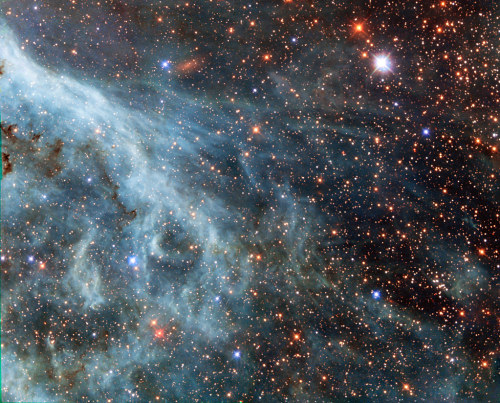shibushiuniverse
YOU CAN IMAGINE EVERYTHING
37 posts
Latest Posts by shibushiuniverse
✘ ✘ ✘ ✘ ✘ ✘ ✘ ✘ ✘ ✘ ✘ ✘ ✘ ✘ ✘ ✘ ✘ ✘ ✘ ✘ ✘ ✘ ✘ ✘ ✘ ✘








✘ ✘ ✘ ✘ ✘ ✘ ✘ ✘ ✘ ✘ ✘ ✘ ✘ ✘ ✘ ✘ ✘ ✘ ✘ ✘ ✘ ✘ ✘ ✘ ✘ ✘
miss those times...<3



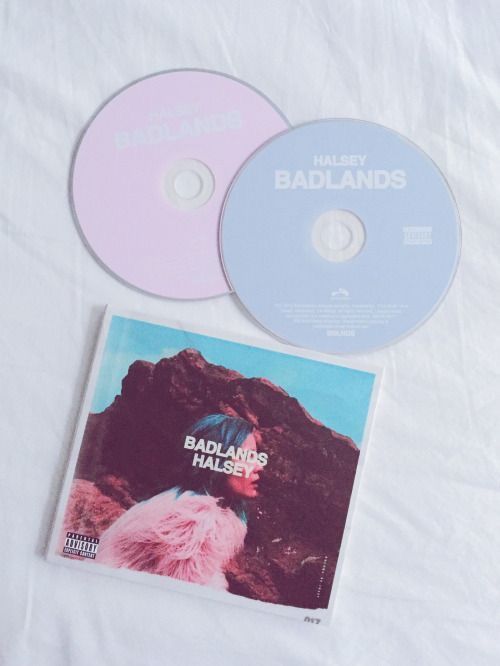






NGC 6995: The Bat Nebula : Do you see the bat? It haunts this cosmic close-up of the eastern Veil Nebula. The Veil Nebula itself is a large supernova remnant, the expanding debris cloud from the death explosion of a massive star. While the Veil is roughly circular in shape and covers nearly 3 degrees on the sky toward the constellation of the Swan (Cygnus), NGC 6995, known informally as the Bat Nebula, spans only ½ degree, about the apparent size of the Moon. That translates to 12 light-years at the Veil’s estimated distance, a reassuring 1,400 light-years from planet Earth. In the composite of image data recorded through narrow band filters, emission from hydrogen atoms in the remnant is shown in red with strong emission from oxygen atoms shown in hues of blue. Of course, in the western part of the Veil lies another seasonal apparition: the Witch’s Broom Nebula. via NASA
Tuesday 12th July, 14:30 UTC
Make a note in your own time zone Zespacebloggers, probably the biggest event in astronomy in our lifetimes is about to drop a large amount of images and data from the new JWST.
Nasa has kindly provided us with a few images that are amongst the first targets of the JWST, some very familiar to those on this blog, and others that may become the new iconic images as we move from the Hubble era into the JWST one.

The Carina Nebula, a common feature here, and one of the most spectacular nebula's in our night sky. The nebula is located 8,500 light years from Earth in the constellation of Carina and contains the famous Eta Carina.

Next on the list is an exoplanet, WASP 96 B, a planet half the size of Jupiter orbiting it's sun every 3.4 days, and JWST has managed to capture a spectrum of light from the atmosphere of this planet as it passes between us and it's star. While this won't be a pretty picture of a planet, the ability to read the spectrum of light from a exoplanet, will allow us to give a much better view of the atmosphere and what it's actually made up of, not bad for a planet over 1,150 light years from Earth.

Next up is the Southern Ring Nebula NGC 3132, 2,000 light years from Earth in the constellation of Vela. This is a planetary nebula, the final shedding of the atmosphere of a star that was once not too dissimilar to our own sun. If you look closely you can see there are two stars in the centre, the white dwarf responsible for the ring is the small dot just above a binary partner star that has yet to end it's life. The heat from the tiny white dwarf is what is responsible for the nebula glow, as it bombards it with UV radiation.

Stephan's Quintet featured here recently, is a group of galaxies 290 million light years from Earth, I personally can't wait to see this one from JWST.

Finally there is SMACS 0723, a distant cluster of galaxies that include many examples of gravitational lensing, and I would suspect, this is the deep space image that is attempting to use that gravitational lensing to see further back in time than ever before, just a 100+ million years after the big bang.
There's a HUGE amount to look forward to this week, and just as we still turn to Hubble to take our breath away, the material coming from JWST will continue to do this long into the future.

𝑵𝒐𝒓𝒕𝒉 𝑨𝒎𝒆𝒓𝒊𝒄𝒂 𝑵𝒆𝒃𝒖𝒍𝒂
This view of the North America nebula combines both visible and infrared light observations, taken by the Digitized Sky Survey and NASA Spitzer Space Telescope. Clusters of young stars about one million years old can be found throughout the image.
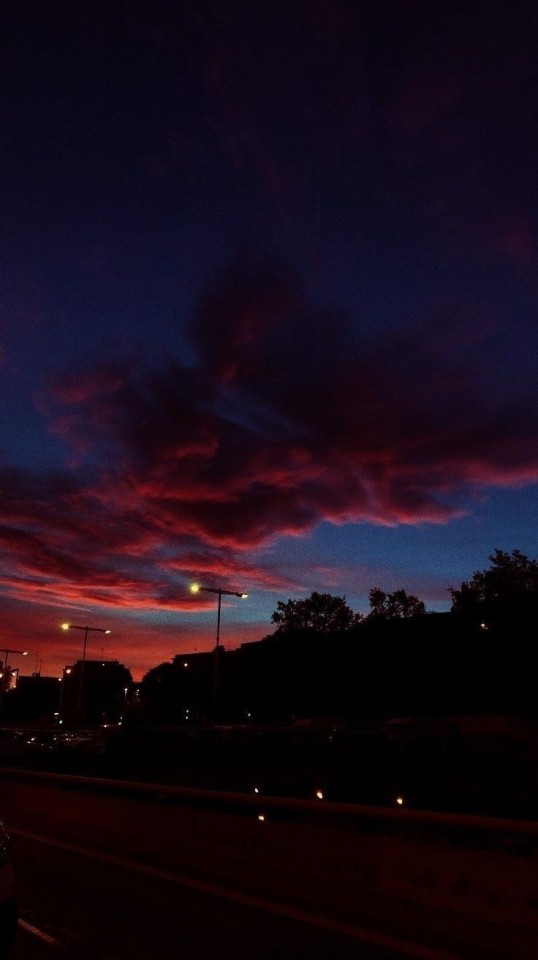
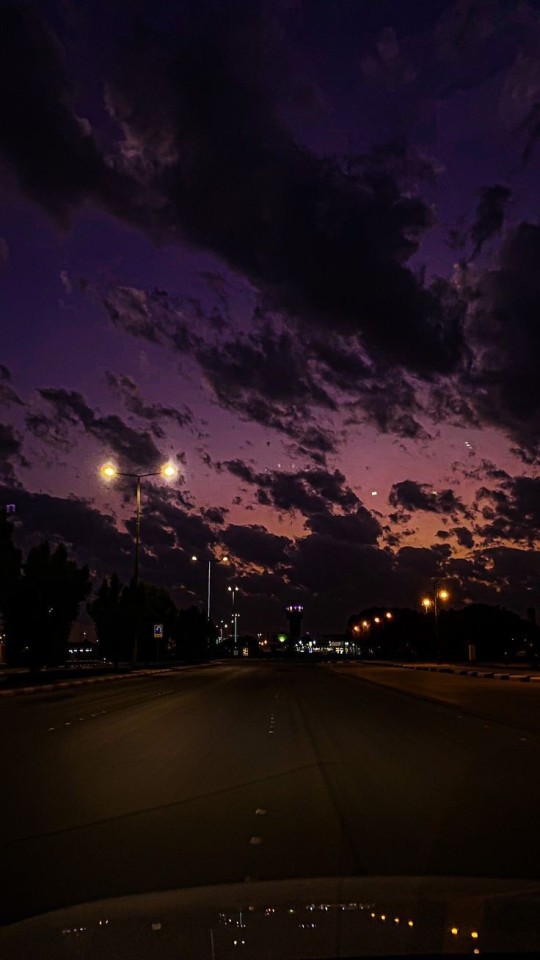




Spatial veils of light
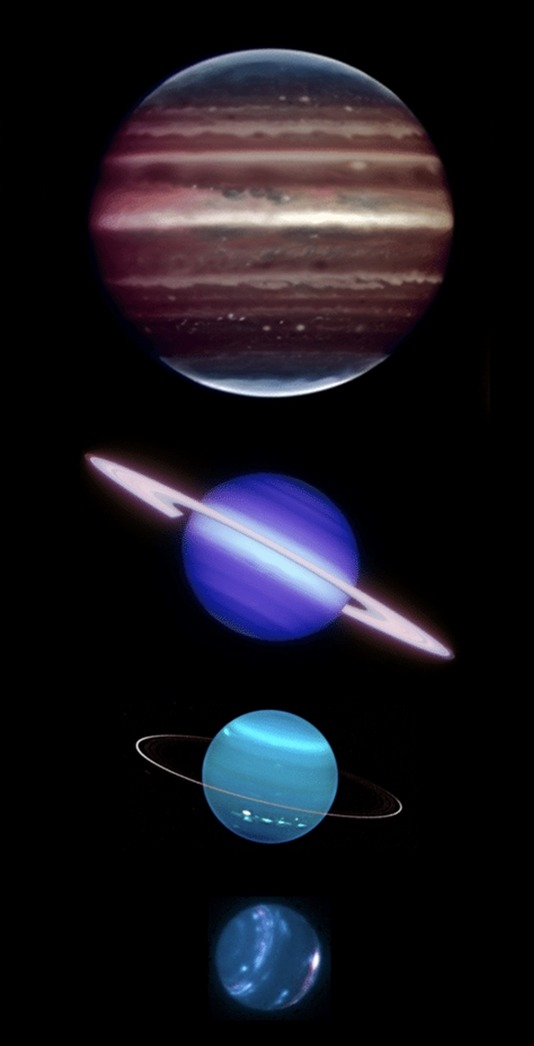
Giant Planets at near-IR wavelengths with adaptive optics
l images not to scale; via ResearchGate
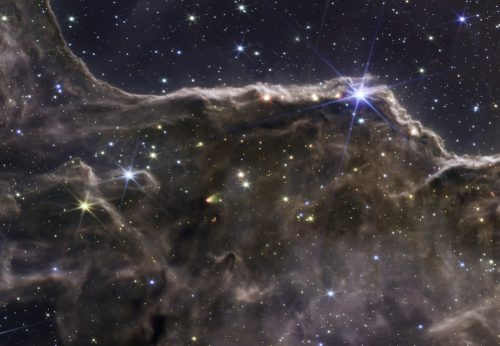
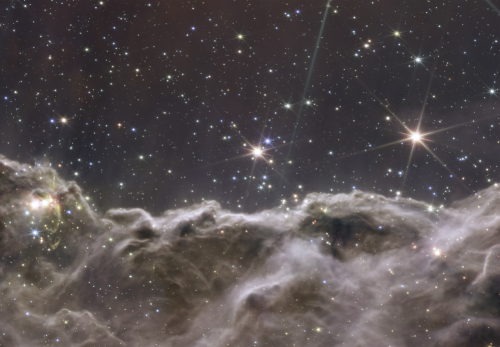
Astronomers using NASA’s James Webb Space Telescope combined the capabilities of the telescope’s two cameras to create a never-before-seen view of a star-forming region in the Carina Nebula. Captured in infrared light by the Near-Infrared Camera (NIRCam) and Mid-Infrared Instrument (MIRI), this combined image reveals previously invisible areas of star birth.
Image credit: NASA, ESA, CSA, and STScI
there are southern lights?!
YES THERE ARE MY FRIEND AURORA AUSTRALIS THE DAWN OF THE SOTUH. CAUSE THEY'RE IN THE SOUTH
they're the exact same thing as the northern lights: a phenomenon in the atmosphere due to the interaction of the solar winds against the earth's magnetic field and gases up there
HOWEVER
they differ in one major way however: pink as a color shows up more commonly than in the north!

LOOK AT HOW PRETTY
the classic green aurora is of course still around it is one of the more common colors but pink shows up just a bit more frequently than in the north!

unobtainable watermelon
they are absolutely stunning and one of the best ways to see them is on a cruise (ehhhhhhhh) or going to antarctica!!!!!
i'm obsessed with these funky little things like look at nature's neon lights she's so pretty. they're absolutely beautiful and it is on my bucket list to see both of them
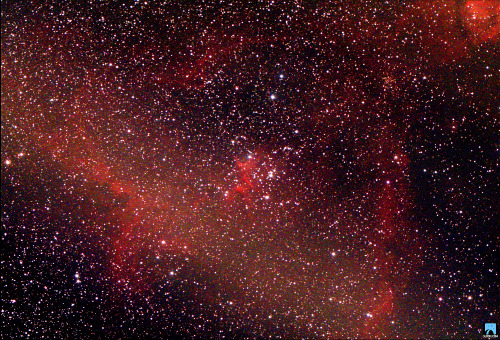
This is the Heart Nebula! 💖💖💖
Happy Valentine’s Day! To celebrate this occasion, here is the beautiful Heart Nebula, an emission nebula with dark dust lanes and glowing red hydrogen gas. The heart shape of the nebula is driven by stellar winds from the hot stars inside, some of which have masses up to 50 times the Sun! 💕💕💕
Taken by me (Michelle Park) using the Slooh Canary Two telescope on February 7th, 2022 at 21:13 UTC.
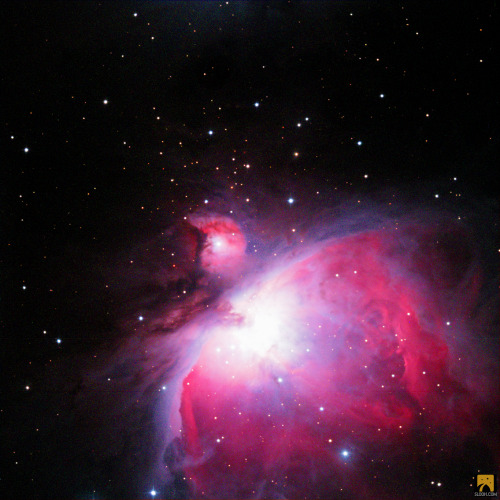
This is the Orion Nebula! ✨✨✨
Recent observations by the Hubble Space Telescope reveal the presence of protoplanetary disks, or proplyds, in the Orion Nebula. Newborn stars form in this beautiful nebula when clumps of hydrogen gas condense and become hot enough for stellar fusion! 💥💥💥
Taken by me (Michelle Park) using the Slooh Canary Two telescope on January 20th, 2022 at 3:22 UTC.

This is the North America Nebula! 🌎🌎🌎
Although the thick dust of this nebula makes it opaquely red, the use of infrared telescopes reveal a beautiful stellar landscape underneath. Stretching across 50 light years, this nebula contains thousands of young, hot stars that heat up the surrounding gas and make it emit its amazing colors! 💥💥💥
Taken by me (Michelle Park) using the Slooh Canary One telescope on May 26th, 2022 at 4:33 UTC.






















